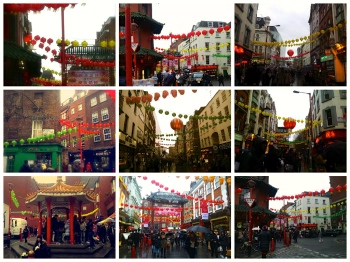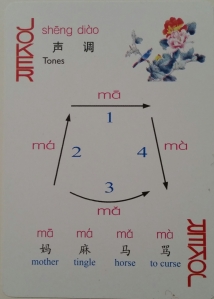[Picture taken from a Chinese music app]
新年快乐! According to the Chinese lunar calendar, today is the first day of the new year! Following the Chinese Zodiac, 2015 is the year of the Sheep! Stay till the end to learn about the picture below…
It is believed that each animal has a special attribute that will bring you some sort of good luck in the new year, particularly if you were born in the year of that Zodiac animal. For 2015 we can expect fortune, as this is the symbol of the Sheep. Compared to the other animals in the Zodiac, the Sheep is also known as the healer, and is associated with creative arts. If you’re a Sheep yourself, perhaps you would like to read your horoscope for 2015 http://astrologyclub.org/chinese-horoscope/2015-year-sheep/ (if you don’t believe in horoscopes there is still no harm in reading it out of curiosity).
The Sheep is the eighth animal of the Chinese Zodiac. People born in 1955, 1967, 1979, 1991, 2003, and of course 2015 are all born in the year of the Sheep! Some people you may know who were born in the year of the Sheep include:
- 1955 – Bruce Willis, Rowan Atkinson, Steve Jobs
- 1967 – Julia Roberts, Vin Diesel, Jamie Foxx
- 1979 – Adam Levine, Heath Ledger, James McAvoy
- 1991 – Louis Tomlinson, Ed Sheeran, Erik Per Sullivan
Some very well known celebrities were born in the year of the Sheep, who is your favourite? If you are born in the year of the Sheep, it is said that you are most compatible with people born in the year of the Horse, Pig and Rabbit, but you are least compatible with the Dog, Ox and Rat. The Sheep is a Yin energy (part of Yin and Yang), which is a symbol of tranquillity. Therefore the best points of your personality are that you are polite, imaginative, and filial. However the negative side is that you can be pessimistic, unrealistic and slow in behaviour, probably because the Sheep have Romantic ideals.
My teacher told me that Chinese new year is celebrated for fourteen days! During this time students leave school so that they can be with their family to celebrate the joyous occasion. My friends have been showing me videos of the fireworks and firecrackers that are being let off at night, and people even decorate their doors with red auspicious symbols (like the ‘double happiness’ sign). Another feature of the holiday is that children are given ‘red envelopes’ or ‘red pockets’ from their elders, which contain money to be spent in the new year. Major Chinese social networking sites have recently adopted this tradition, as some have created a random raffle to win red envelopes online! (I didn’t win) Last year I went to China town in London with some friends to take part in the new year festivities. The events were centrally in Leicester Square where there was a stage for various performances (it was really crowded), and there was a mini dragon parade in Chinatown itself.
Here are some videos that will help you celebrate the new year! The first video tells the story of how the animals were chosen to be included in the Zodiac. https://www.youtube.com/watch?v=Iw0adpGLIdk I also remember being told this story during secondary school, but it was a slightly different version (and there was no mention of the cat). The second clip is a cartoon song with traditional Chinese instruments. It was released this January, so it was made more recently than the previous video. https://www.youtube.com/watch?v=KtWYHwWeLeE It might not be to your taste, but you can test your Chinese by seeing if you understand the lyrics. Lastly, here’s a video I saw in my Youtube subscription last night; https://www.youtube.com/watch?v=0d-sUnTCXnQ It seems like WongFu have found a way for us to manipulate our ethnic holidays, although I would advise against following their example.
Finally I will teach you how to wish someone good luck for this new year. Here are five ways to wish someone a ‘happy new year’:
- 羊年大吉 (yáng nián dàjí) Means that the year of the sheep (also referred to as the year of the Goat or Ram) is very lucky.
- 洋洋得意 (yáng yang déyì) Can be translated as ‘to look triumphant’
- 恭喜发财 (gōng xǐ fācái) Used to wish someone a prosperous year.
- 新年快乐(xīn nián kuài lè) Simply means ‘happy new year’. Do you notice it anywhere else in this post?
- 万事如意 (wàn shì rú yì ) Is an idiom to wish someone all the best so that their hopes will be fulfilled.
I haven’t made a post on the year of the Horse (the Zodiac animal for 2014) so I may look into exploring that aswell when time permits. As for the remaining ten Zodiacs, I will either upload a post about them annually for the next ten years…OR you can look out for something later this year 😝
If you decide to research a Chinese Zodiac animal, good luck世界。
万事如意, 从欣妍 – From Xinyan.
Edit: A friend of mine went to China town (中国城) today and took a few photos of the decorations. She allowed me to use her photos, so I have edited a few so that you can see how London celebrated the Year of the Sheep! (The second picture at the start of the post). Hope you like it~




